Introduction
Cairo was initially a convoluted settlement. The historic site had a defense fort known as ‘Babylon fort’. Upon conquest by the Arabs, historic Cairo was formed by a combination of four historic sites. These sites were Fatimid Cairo (AL-Qahira), Al Fustat, Al Qata’i and Al Askar.
The city underwent construction and urbanization during the Mamluks era (1250-1517 AD) Salah al-Din built the present widespread fortification wall that encircles Al Qahira and Al Fustat. In the northern side Al-Qahira enlarged its peripheries to the other area of Bab Al-Futuh and the northern wall (Rghei & Nelson 1994, p.145).
This extension went on towards Bab Al-Bahar from Bab Al-Shairiyya and linked the two regions to Bulaq. Large portions of Khalij were built leading to an extension of the west. The southern region starting from Bab Al-Kharg, through Bab Al-Luq ended in Bulaq. Meanwhile commerce achieved significance leading to establishment of huge numbers of khans, caravanserais and Wekalas.
The political authority became transformed in the Qasaba, in Fatimid where cultural and economic activities were highly practised. Al-Azhar, a theological university became the centre of commerce and religious practices. This was near the complex Sultan Al-Ghuri which was constructed in 1509 AD.
This paper explores the Historic Cairo as a heritage site. It focuses on the challenges facing the site and the process of revitalization. The paper also proposes new measures to be taken to improve this process.
Challenges facing the historic city
A major issue affecting the city is urbanization. The high rate of urbanization has brought along population influx. The social demography has been dramatic since the 19th Century, particularly after the Revolution of the Military Officers in 1952 (see diagram 1 below for a major historic heritage that needs to be preserved 1: Cairo’s Informal Areas between Urban Challenges and Hidden Potentials).
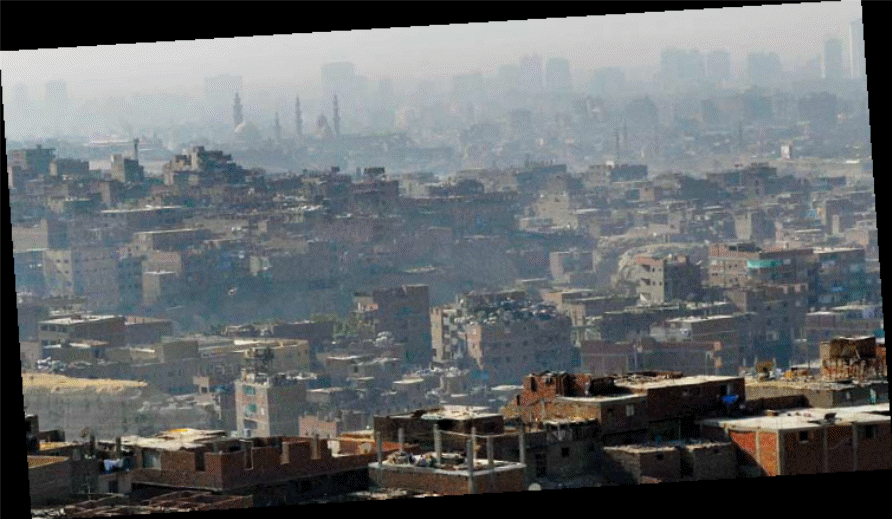
Cairo, being the capital city was largely affected because the growth rate of its population almost tripled to 18.2 per cent. This was in 1976 (Gharib 2010, p.207). As a result, the population increase forced Cairo to put up structures to accommodate the extra residents. This saw Cairo become one of the biggest cities in Africa and one of the globe’s greatest metropolitan cities. The high rate of urbanization attracted rural immigrants.
This was represented by 30 per cent of the total population growth in 2006. The immigrants had to secure accommodation which could be no other than the undeveloped regions like historic sites of Cairo which provided cheap residence. The sites could not accommodate the huge population of immigrants leading to population overflow to other regions such as historic cemeteries. See figure 1 for the Sultan Hasan Mosque next to the Citadel-Cairo.
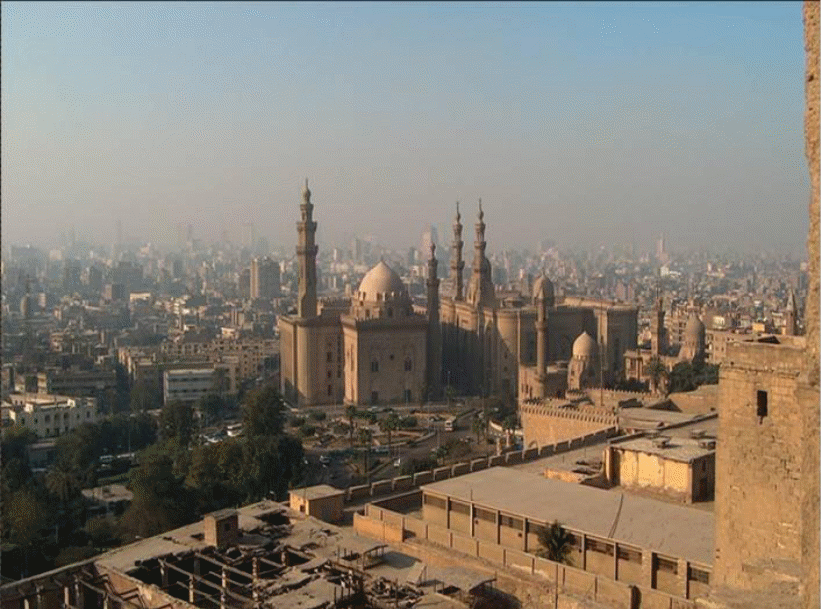
Figure 1: Source (Saleh, 2009)
Increase in population negatively affected infrastructure in historic Cairo. This is because the infrastructure had not been designed to serve such a large population. For example the water supply and sewerage system which were constructed before World War 1 were not meant to serve a large population. Electricity supply has been largely affected by the high population. This is because there has been unofficial electricity ‘hook up’ created by the local residents (Creighton 2007, p.340).
Insufficient preservation of the existing heritage buildings has posed a challenge to historic Cairo. The government has failed in the modification and maintenance of these structures. These buildings face extinction and loss of cultural heritage. There has been erection of extra floors with no formal permit above these buildings which has led to loss of originality in the heritage sites (Rghei & Nelson 1994, p.146).
Concrete-constructed structures have replaced the old buildings of the historic Cairo. This has further led to the loss of heritage in the city. Besides this there has been unsuitable implementation of policies in regards to the preservation of these buildings, leading to loss of some structures due to bad weather conditions. This has resulted to irreparable damage of the splendid heritage and logic of the old city. See the diagram below for a preserved source of heritage.
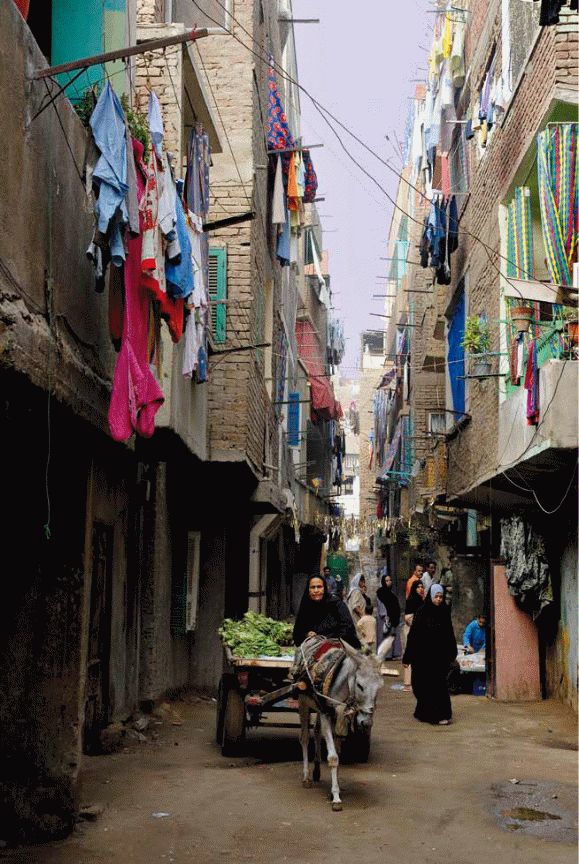
Poor treatment of the historic city by the immigrants has posed another challenge to the historic city. These immigrants treat the buildings with little or no respect with little understanding of the cultural heritage of these buildings. They fail to comprehend the usefulness of these buildings.
As a result the monuments may suffer destruction and extinction. This is what Gharib (2010, p.12) terms as “cultural rupture”. Whereby everything original is despised. This has been a common attribute of Historic Cairo. Economists, Politicians and policymakers have looked down upon the cultural heritage of Cairo.
The economic status of Historic Cairo is facing a challenge too. A strong economic character of Cairo had emerged due to its skilled craftsmanship, wholesale trade establishments and other heritage activities. Therefore the city received high economic significance. Unfortunately, there has been a swift decline in these activities due to poor government venture into education centers that promote craftsmanship.
Instead of focusing on this middle education the government has offered free higher education (Schreur 1999, p.18). Contemporary trade centers have been constructed in the city killing the old wholesale establishments. The old local residents who practiced the trade have emigrated and new immigrants who do not understand the trade have taken over their place. See the diagram below: Al-Moez street- Hotel interior.
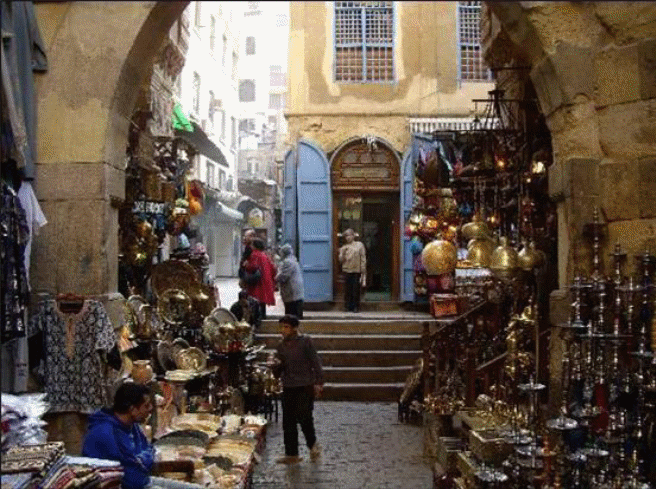
The ancient wholesale trade was shifted to the east of historic Cairo. As a result it lost its commercial and economic significance. In the place of the ancient wholesale trade, the new immigrants introduced such light industries as dye, copper and aluminium manufacturers.
These industries were financed by the immigrants. Machine vibration from these industries has caused noise pollution in the neighborhood. Pollutant waste from these industries is also a threat to the built legacy and monuments’ substantial and artistic status (Rghei & Nelson 1994, p.147). There was also establishment of new modern trades such as boutiques within the ancient fabric. These trades do not portray the culture of the Historic Cairo but reflect the needs of the residents.
The historic monuments have not been utilized for the local community’s benefit as expected. Neither have they served the tourism industry. There are only a few houses that have been transformed to serve cultural uses and ceremonies. These include such historic houses as wekalas.
The other historic monuments are prone to misuse by the local residents if the government does not take caution (Sutton & Fahmi 2002, p.75). This may be transformation of the historic buildings into residences or trade shops. An example of an under-utilized historic monument is Bazara’a Merchants Marketplace commonly referred to as Wekalat Bazara’a.
Despite receiving funds from USAID and restoration by the Supreme Council of Antiquities, the place was improperly re-used leading to closure by the Government (Gulick 1963, p.180). It was left behind with no maintenance as a result its walls sucked up ground water until it soaked. There are just a few rooms left to serve Supreme Council of Antiquities officials. The improperly installed toilets have resulted into leakage of water through the walls.
The ancient public bath has also fallen into misuse. These baths commonly referred to as hammamms, formed an integral part of the initial Arab-Islamic city. Unfortunately, the bathhouses now harbor socially unacceptable practices. They have become the joints for homosexuals thus losing their heritage (Sutton & Fahmi 2002, p.75).
Conservation professionals and officials as well as the general public do not have a proper methodology of rejuvenating the historic monuments in an upholding, comprehensive manner. Failure to align tourism to rejuvenating goals has posed a problem to the historic Cairo. Thus, the city has lost its significance to tourists and instead viewed just as a normal set of structures. The loss of historic fabric in Al-Gamaliya is a challenge to the historic Cairo (Schreur 1999, p.18).
Due to population pressure in the second half of the 19th Century, there was need to construct an access road connecting Al- Gamaliya to the city. This is because the Sari Al-Muski could no longer support the heavy traffic. This led to the laying out of Sari Al-Azhar which ran parallel to the access road. The action brought about the loss of the fabric.
The houses of Qasr Al-Shama region have been on the receiving end. The walls of these houses have been left with lethal cracks due to insensitive watering activities in the neighborhood church quarter. This caused adjustments in the characteristics of soil in the entire region and eventually there was immigration beneath the walls.
There has been exterior beautification of these walls overlooking the streets of Qasr Al-Shama (Rghei & Nelson 1994, p.148). These walls are only plastered and painted thus neglecting the structures and placing the lives of the inhabitants in danger. See diagram for clarification.
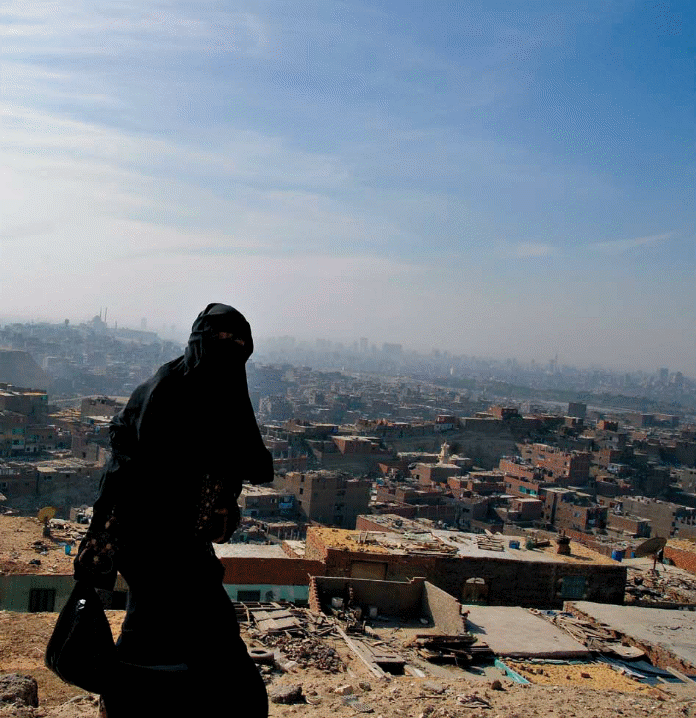
The groundwater table is also threat to historical Cairo. This water seeps through the walls of the monuments causing them to wear. Some walls already have cracks. In future, we might experience a rubble and wreckage of these monuments. The sewage pipes of Islamic monuments lining the streets of Mu’ez Al –Din Allah have burst leading to a loss of the street.
There is no through-way for carts, cars or even pedestrians (Mohareb & Kronenburg 2012, p.13). The monuments are not exposed to human adversaries only but natural phenomenon has proved a foe too. These natural foes include earthquakes. For example the earthquake s that struck Egypt in the fiscal 1304 and 1992. Salty groundwater has also affected the monuments negatively as it seeps into the soil eating the stones away slowly.
Measures to be taken to sustain the cultural heritage of historic Cairo
Despite the challenges faced by the historic Cairo, there are remedies to these issues. The monuments still have a chance to be rejuvenated. There are several measures that need to be taken to rescue the historic sites from wreckage. Before carrying out these measures the general public ought to be empowered on its role in the revitalization process.
There is need to educate the general public of the cultural heritage of the Historic monuments of Cairo. The conservation experts ought to involve the local community in the conservation process. This is because the local residents are forming the immediate interaction with the monuments (Gulick 1963, p.182). The locals should be taught how to make good use of the monuments as well as maintain them. See the figures below for of the measures that should be taken.
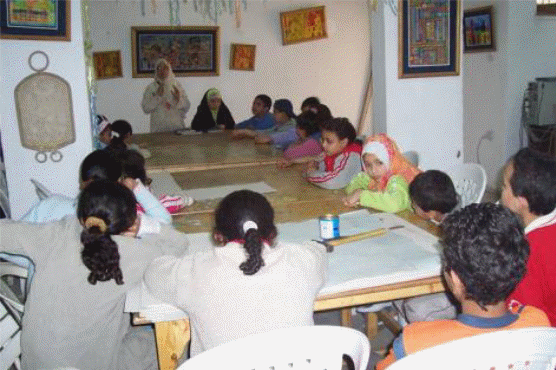
To achieve this, conservationists can call public gatherings, raise awareness through public media or carry out education activities in schools or at the monument sites, or form committees whose role will be to assist building owners in understanding the whole conservation process. See figure 3 on how children should be involved,
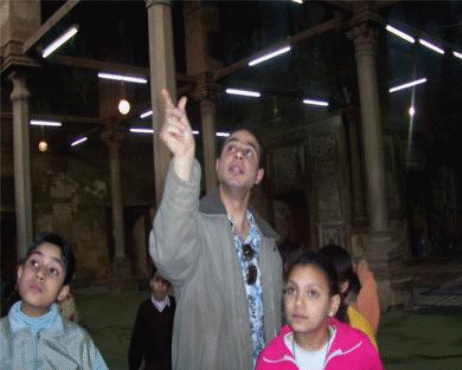
This will enable them to lay out the facts, cost of rehabilitation, amount and details of work involved in the whole operation process. The conservationists will also be able to use pin up banners and display posters giving the community a chance to have a profound understanding of the whole issue at hand. In a nutshell, community involvement is a cornerstone in the rejuvenisation process of the Historic Cairo (Schreur 1999, p.18). Figure 3 is the creation of public awareness.
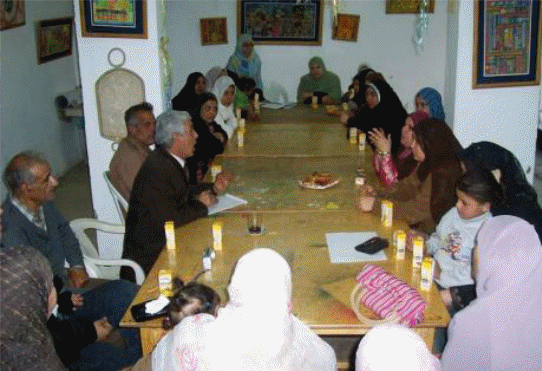
The conservation agents ought to come up with a plan which will be designed to manage the Historic monuments of Cairo as well as an outlook overview to emphasize the economic, cultural, social and emotional values natural in the cultural chattels. The plan should be not less than five years. The plan will define these values starting with the most important value in order to retain respect of the heritage site.
The plan should also specify the source of funds be it the government or non-governmental organizations. This should be followed by a clear budget of how the funds will be utilized. A maintenance body ought to be selected and its roles and responsibilities indicated clearly in the plan.
A program of how the maintenance will be carried out should be included in the plan (Lamei 2011, p.4). The plan should carry systems and procedures of the management to avoid supervision by more than one body thus streamline the decision making process. An example of a preserved heritage is as indicated in the diagram below.
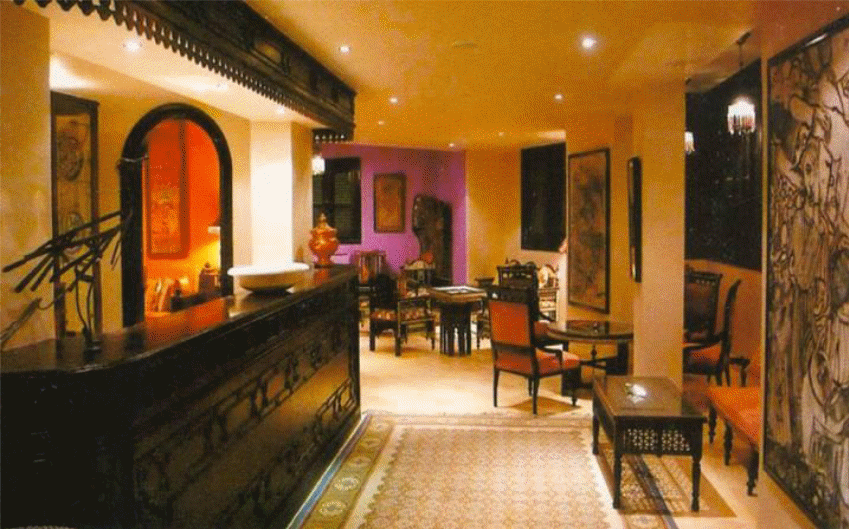
Hotel in an Al-Moez Street
The conservation process of the Historic monuments should incorporate the intangible heritage so as restore the memory of the historic location. Hence, there is the need to look into the cultural heritage while recovering the historic monuments of Cairo. The government should also increase investments in the tourism industry.
The rate of tourists has been low recently, despite the rich heritage that Historic Cairo carries. The government ought to invest heavily in the industry. The foreign exchange earned from the industry may aid in the invigoration of the monument sites (Stewart 2003, p.130). see diagram below for preserved shops selling hookahs in Cairo.
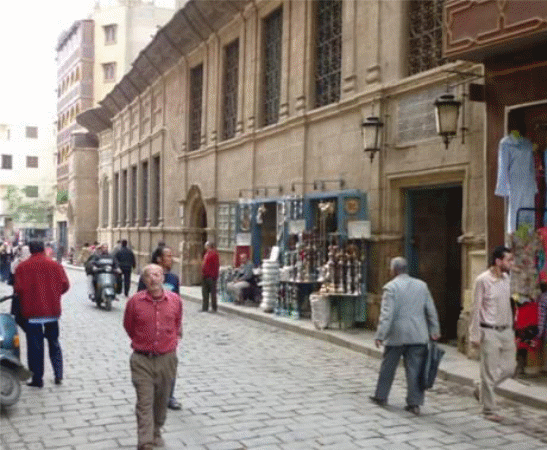
An agenda for cultural tourism should be developed so as to safeguard the reoccurrence of heritage damage. The ancient wholesale trade should be restored by encouraging the local community to engage in handicrafts. A program should be formulated that will enhance the trade (Schreur 1999, p.18). The government should provide loans to the local artisans through banks to enable them to start the trade businesses. The government should also organize exhibitions for these products in order to market them both regionally and worldwide.
The Non-governmental Organizations should also be involved in the rehabilitation process as they are experts in communicating with people as well as encouraging investors to invest I tourism. They also have expertise in the best methods to rehabilitate old historic sites so as to be well-suited with conventional building methods and techniques laid down by the relevant authorities without loss of cultural heritage.
The non-governmental organizations are also significant in funding of projects. The government should come up with resettlement scheme to resettle the extra population residing in the monument sites. This will ease pressure on the resources such as water, sewerage systems and electricity (Mohareb & Kronenburg 2012, p.12). The government should also provide housing to these residents so as to ease conversion of monuments into houses.
A program to rehabilitate electricity supply in the monumental sites should be put in place. This will improve lighting in the area. The drainage system should be rehabilitated too in order to restore the streets of Mu’ez Al –Din Allah. The government should improve other streets so as to ease to ease transport system within the entire region of Historic Cairo.
The government should come up with disaster preparedness measures to prevent the repeat of destruction that occurred during the 1992 earthquake (Lamei 2011, p.5). The construction of buildings in the historic Cairo should be monitored closely so that the city does not lose its cultural significance. The underground water in the monument sites should be directed into drainage systems to avoid further destruction of the walls.
Trades that are a threat to the cultural heritage should be transferred from the Historic Cairo. These trades include hookahs (narghile) sale which is practiced in the streets of Al-Moez (UNDP, 1997). The business is not only a threat to the culture but a health hazard. The businesses should be removed from the street and in their place; the ancient handicrafts should be restored.
Conclusion
The historic Cairo possesses great potential which has not been utilized properly. The proper utilization lies in the hands of the local community, government and conservation agents. There is need to rehabilitate the heritage and restore the cultural heritage so that this magnificent site receives the significance it deserves. Upon restoration, tourism will improve in the region leading to an increase in revenues.
References
Creighton, O 2007, “Contested townscapes: The walled city as world heritage”, World Architecture-Routledge, vol.39 no.3, pp.339-354.
Gharib, RE 2010, “Revitalizing historic Cairo: Examining the public policy formulation and implementation”. Web.
Gulick, J 1963, “Images of an Arab City”, Journal of the American Planning Association, vol.29 no.3, pp.179-198.
Lamei, S 2011, “Regeneration of Historic Cairo & the sustainable development process”, City & Times, vol.5 no.1, pp.1-5, <http://www.ct.ceci-br.org/ceci/>
Mohareb, N & Kronenburg, R 2012, “Arab walled cities: Investigating peripheral patterns in historic Cairo, Damascus, Alexandria, and Tripoli”. Web.
Rghei, AS & Nelson, JG 1994, “The conservation and use of the walled city of Tripoli”, Geographical Journal, vol.160 no.2, pp.143-158.
Schreur, E 1999, “National heritage Cairo style”, ISIM Newsletter, vol.2, p.18.
Stewart, D 2003, “Heritage planning in Cairo: Multiple heritage in a mega-city”, Journal of International Development Planning Review, vol.25 no.2, pp.129 -152.
Sutton, K & Fahmi, W 2002, “The rehabilitation of old Cairo”, Habitat International, vol.26, pp.73-93.
UNDP 1997, Rehabilitation of historic Cairo: Final report, UNDP Technical Cooperation Office, Cairo.